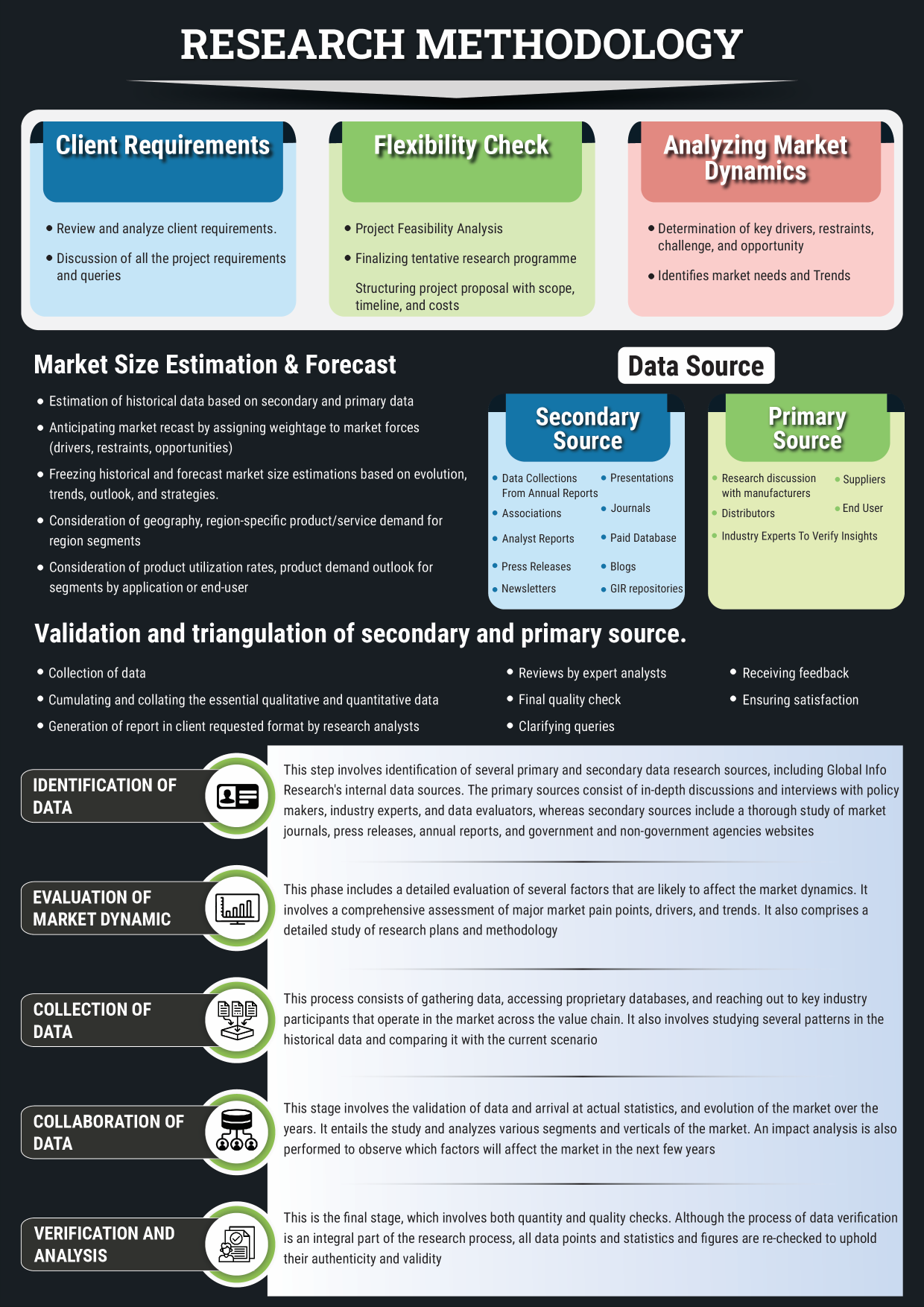Market Outlook
The global MXene Material Market size was valued at USD 30 million in 2022 and is forecast to a readjusted size of USD 128.4 million by 2029 with a CAGR of 23.0% during review period.
Introduction: Why the MXene Material Market Matters in 2025
MXenes, a class of two-dimensional materials made from transition metal carbides, nitrides, and carbonitrides, have attracted significant attention for their remarkable electrical conductivity, flexibility, and mechanical strength. Emerging as a next-generation material in areas like energy storage, sensors, and water purification, the MXene material market is poised for exponential growth by 2025, particularly in the fields of electronics and renewable energy.
Market Drivers: What's Fueling the MXene Material Market Boom?
Technological Advancements in Energy Storage: MXenes' exceptional conductivity makes them highly attractive for use in batteries and supercapacitors, driving demand in the energy storage market as industries shift towards more efficient and sustainable energy solutions.
Increasing Investment in Nanotechnology: With the growing applications of nanomaterials in a wide range of industries, MXenes are gaining popularity due to their unique properties, making them suitable for use in advanced electronics, sensors, and more.
Growing Need for Water Purification Solutions: MXenes' potential to filter heavy metals and toxins from water is spurring interest in their use for water treatment, particularly in regions with contaminated water sources.
Innovation in Focus: How Manufacturers Are Raising the Bar
Synthesis of High-Quality MXenes: Ongoing research focuses on developing scalable, cost-effective methods for synthesizing high-quality MXene materials, making them commercially viable for mass production in various applications.
Enhanced Functionalization: Companies are working on functionalizing MXenes for more specific applications, such as improving the performance of energy storage devices and creating more effective water filtration systems.
Regional Breakdown: Where the Market is Growing Fastest
North America: North America leads in MXene material research and development, driven by academic and industrial investments in nanotechnology and energy storage technologies.
Asia-Pacific: With its strong electronics manufacturing base and increasing investment in renewable energy solutions, Asia-Pacific is a rapidly growing market for MXenes.
Europe: Europe’s focus on sustainable technologies and renewable energy solutions is driving the demand for advanced materials like MXenes, particularly in energy storage and environmental applications.
Strategic Considerations: How to Succeed in the MXene Material Market 2025
Focus on Application-Specific Solutions: Companies should focus on tailoring MXene materials to specific applications, such as energy storage, water purification, and electronics, to maximize their potential in diverse markets.
Investment in Research and Development: Continuous investment in R&D will be critical to overcoming production challenges and scaling up the use of MXenes across industries.
Conclusion: The MXene Material Market 2025 - Revolutionizing Industries with Advanced Nanomaterials
The MXene material market is positioned for significant growth in 2025, as industries explore its potential in energy storage, water purification, and advanced electronics. As research advances and new applications emerge, MXenes are set to become a pivotal material in the global shift towards sustainable and high-performance technologies.
Key Market Players
- American Elements
- Sigma-Aldrich (Merck)
- Japan Material Technologies Corporation (JMTC)
- Alfa Chemistry
- Beike 2D Materials
- ACS Material
- Nanjing XFNANO Materials
- Beijing Zhongkeleiming Technology
- 6Carbon Technology (ShenZhen)
- Nanoshel
- Foshan Xinxi Technology
Segmentation By Type
- Ti-based
- V-based
- Nb-based
- Mo-based
- Others
Segmentation By Application
- Energy Storage
- Optoelectronics
- Environmental
- Biomedical
- Photocatalysis
- Others
Segmentation By Region
- North America (United States, Canada and Mexico)
- Europe (Germany, France, United Kingdom, Russia, Italy, and Rest of Europe)
- Asia-Pacific (China, Japan, Korea, India, Southeast Asia, and Australia)
- South America (Brazil, Argentina, Colombia, and Rest of South America)
- Middle East & Africa (Saudi Arabia, UAE, Egypt, South Africa, and Rest of Middle East & Africa)
Market SWOT Analysis
What are the strengths of the MXene Material Market in 2025?
MXene materials exhibit exceptional electrical conductivity, mechanical strength, and thermal stability, making them valuable in energy storage, sensors, and nanotechnology applications. Their versatility in advanced materials science strengthens market potential.
What are the weaknesses of the MXene Material Market in 2025?
High synthesis costs and complex processing techniques limit large-scale commercialization. Stability issues and oxidation concerns may affect long-term performance.
What are the opportunities for the MXene Material Market in 2025?
Growing interest in high-performance batteries, supercapacitors, and electronic coatings fuels demand. Research into scalable and cost-effective production methods could accelerate market adoption.
What are the threats to the MXene Material Market in 2025?
Competition from graphene and other advanced nanomaterials poses a risk. Limited regulatory approvals for commercial applications may slow market penetration.
Market PESTEL Analysis
How do political factors impact the MXene Material Market in 2025?
Political factors such as government funding for research and development in advanced materials will significantly impact the MXene material market. Policies promoting innovation in nanotechnology, energy storage, and electronics will support the growth of MXenes in these sectors. Trade policies, such as tariffs on raw materials used in MXene production, could affect market prices and accessibility.
What economic factors affect the MXene Material Market in 2025?
Economic factors such as the increasing demand for energy storage technologies, advanced electronics, and sensors will drive the MXene material market. The growing trend towards electric vehicles and renewable energy solutions will create significant opportunities for MXenes, which are highly efficient in energy storage devices like supercapacitors and batteries. Economic fluctuations could impact investment in new technologies, including MXene-based innovations.
How do social factors shape the MXene Material Market in 2025?
Social factors, including the global push for energy-efficient technologies and sustainable energy sources, will propel the MXene material market. The increasing demand for electric vehicles, consumer electronics, and renewable energy solutions will create a growing market for MXenes. As consumers and industries move towards greener technologies, MXenes will benefit from their application in batteries, capacitors, and energy storage solutions.
What technological factors are relevant to the MXene Material Market in 2025?
Technological advancements in the synthesis and application of MXenes will play a critical role in market development. Innovations in material processing, scaling production, and enhancing the performance of MXenes in energy storage and electronics will boost demand. Research into the properties and functionalities of MXenes in next-generation batteries and sensors will drive technological growth.
What environmental factors influence the MXene Material Market in 2025?
Environmental factors, such as the push for clean and sustainable energy solutions, will boost the MXene material market, especially in energy storage and battery applications. MXenes, with their potential for high-efficiency energy storage, will be key in supporting environmental goals in sectors like electric vehicles and renewable energy. Additionally, the material’s role in reducing the environmental impact of electronics and energy storage systems will enhance its market demand.
How do legal factors impact the MXene Material Market in 2025?
Legal factors, including regulations on the safety and environmental impact of materials used in energy storage devices and electronics, will impact the MXene material market. Intellectual property protection for MXene production techniques will encourage further innovation and investment. Regulatory standards for new technologies and materials in industries like batteries and electronics will also affect the adoption of MXenes.
Market SIPOC Analysis
Who are the suppliers in the MXene Material Market in 2025?
Suppliers include manufacturers of advanced nanomaterials, research institutions, and companies producing MXene-based materials, as well as distributors serving industries like electronics, energy storage, and coatings.
What are the inputs in the MXene Material Market in 2025?
Inputs include titanium, aluminum, and other metals used to create MXene sheets, along with equipment for etching and exfoliating the materials. Research and development resources are also essential for improving MXene material performance and applications.
What processes are involved in the MXene Material Market in 2025?
The processes involve the synthesis of MXene materials using selective etching techniques, followed by exfoliation and processing into usable forms. Further testing, characterization, and application development are part of the process to enhance the material's properties.
Who are the customers in the MXene Material Market in 2025?
Customers include manufacturers in the electronics, energy storage, and supercapacitor industries, along with companies producing coatings, sensors, and other high-performance materials.
What are the outcomes in the MXene Material Market in 2025?
Outcomes include expanded use of MXene materials in energy storage devices like batteries and capacitors, further development of their potential in electronic devices, and increased demand from industries seeking advanced materials with superior conductivity and flexibility.
Market Porter's Five Forces
What is the threat of new entrants in the MXene Material Market 2025?
The threat of new entrants is moderate. Although MXene materials are emerging in sectors like energy storage and sensors, the advanced manufacturing process and specialized knowledge required to produce them act as barriers to entry for new players.
What is the bargaining power of suppliers in the MXene Material Market 2025?
The bargaining power of suppliers is moderate. Suppliers of raw materials, such as titanium, and those capable of producing high-quality MXene materials hold some power, but ongoing research and development in alternative sources and processes help mitigate their influence.
What is the bargaining power of buyers in the MXene Material Market 2025?
The bargaining power of buyers is moderate. As the market for MXene materials is still growing and evolving, buyers are limited in their choices. However, as new suppliers and production methods emerge, buyers will have more flexibility to negotiate.
What is the threat of substitute products in the MXene Material Market 2025?
The threat of substitutes is moderate. Other advanced materials like graphene and carbon nanotubes could potentially replace MXenes in certain applications, but the unique properties of MXenes, such as high conductivity and strength, limit the impact of substitutes.
What is the intensity of competitive rivalry in the MXene Material Market 2025?
The intensity of competitive rivalry is moderate. As the market is still developing, there are a few key players, and competition is primarily driven by technological innovation, product differentiation, and research and development investments.
Market Upstream Analysis
What are the key raw materials in the MXene Material Market in 2025?
The key raw materials for MXene production include transition metal carbides, nitrides, and other metal precursors, as well as fluoride-based etching agents. These materials are used in the synthesis of MXenes, which are advanced two-dimensional materials with applications in energy storage, sensors, and electronics.
What role do suppliers play in the MXene Material Market in 2025?
Suppliers play a critical role in providing high-purity raw materials, including transition metals and specialized etching agents, for MXene synthesis. Their role is essential in ensuring that the materials meet the required specifications for advanced applications in energy storage, electronics, and other cutting-edge technologies.
How does the regulatory environment affect upstream factors in this market?
The regulatory environment impacts upstream activities, particularly concerning the handling and disposal of chemicals used in the production of MXenes. Compliance with environmental regulations, especially regarding the use of fluorine-based etchants, is crucial for ensuring the safety and sustainability of production processes.
What technological advancements influence upstream production in the MXene Material Market in 2025?
Technological advancements in material science, particularly in the synthesis of MXenes and their functionalization for specific applications, are influencing upstream production. Innovations in etching techniques and the development of scalable manufacturing processes are enabling the more efficient production of high-quality MXenes at lower costs.
What challenges do upstream suppliers face in this market?
Suppliers face challenges related to the complexity of synthesizing high-quality MXenes, the availability of raw materials, and the high cost of production. Additionally, the need for continuous innovation to improve the performance and scalability of MXenes poses a significant challenge in meeting growing demand across multiple sectors.
Market Midstream Analysis
What are the key processes involved in the midstream of the MXene Material Market in 2025?
Key processes include the synthesis, processing, and distribution of MXene materials, which are used in advanced applications like energy storage, sensors, and electronics. Manufacturers focus on optimizing production methods to scale up production while maintaining material performance.
How do manufacturers contribute to the MXene Material Market in 2025?
Manufacturers are responsible for developing cost-effective production methods for MXene materials, ensuring they meet the needs of industries such as energy storage and electronics, which require high-performance materials.
What is the role of packaging in the midstream of this market?
Packaging protects MXene materials during transport and storage, ensuring they maintain their properties for use in high-tech applications, and providing safe handling in compliance with safety standards.
What challenges do companies face in the midstream of this market?
Challenges include managing production costs, improving material performance, and scaling up manufacturing processes to meet the increasing demand for MXene materials in emerging technologies.
How do distribution channels affect the MXene Material Market in 2025?
Distribution channels ensure that MXene materials are delivered to industries like energy storage, sensors, and electronics, where they can be used to develop cutting-edge technologies. Timely and efficient distribution is essential to meet demand in these fast-evolving sectors.
Market Downstream Analysis
What are the key consumer segments in the MXene Material Market in 2025?
Key consumer segments in the MXene material market include electronics manufacturers, energy storage companies, and researchers in advanced materials. MXenes, known for their high conductivity and unique structural properties, are widely used in applications such as batteries, capacitors, and sensors.
How do suppliers and distributors contribute to the MXene Material Market in 2025?
Suppliers of MXene materials focus on developing high-performance MXenes for use in cutting-edge applications such as energy storage devices and advanced electronics. Distributors play a vital role in ensuring that MXenes are available to researchers and manufacturers in the energy and electronics sectors, thus enabling innovation in these fields.
What role does consumer education play in the downstream market for MXene Materials in 2025?
Educating industries about the properties and potential applications of MXene materials is critical to stimulating demand. As MXenes offer unique advantages for energy storage and high-performance devices, consumer education on their capabilities and efficient use in specific applications will encourage wider adoption.
What challenges do companies face in the downstream market of this industry?
Challenges in the MXene material market include high production costs, scalability issues, and limited awareness about the benefits of MXenes in various industries. Additionally, there is the challenge of refining the manufacturing processes to produce MXenes at a lower cost while maintaining high-quality standards.
How does consumer feedback influence the MXene Material Market in 2025?
Consumer feedback from industries like energy storage and electronics helps drive innovations in MXene materials by identifying areas where performance can be enhanced. Positive feedback from product developers and researchers can accelerate adoption, while critical feedback can direct research efforts toward improving material efficiency and reducing production costs.
Chapter 1, to describe MXene Material product scope, market overview, market estimation caveats and base year.
Chapter 2, to profile the top manufacturers of MXene Material, with price, sales, revenue and global market share of MXene Material from 2018 to 2023.
Chapter 3, the MXene Material competitive situation, sales quantity, revenue and global market share of top manufacturers are analyzed emphatically by landscape contrast.
Chapter 4, the MXene Material breakdown data are shown at the regional level, to show the sales quantity, consumption value and growth by regions, from 2018 to 2029.
Chapter 5 and 6, to segment the sales by Type and application, with sales market share and growth rate by type, application, from 2018 to 2029.
Chapter 7, 8, 9, 10 and 11, to break the sales data at the country level, with sales quantity, consumption value and market share for key countries in the world, from 2017 to 2022.and MXene Material market forecast, by regions, type and application, with sales and revenue, from 2024 to 2029.
Chapter 12, market dynamics, drivers, restraints, trends, Porters Five Forces analysis, and Influence of COVID-19 and Russia-Ukraine War.
Chapter 13, the key raw materials and key suppliers, and industry chain of MXene Material.
Chapter 14 and 15, to describe MXene Material sales channel, distributors, customers, research findings and conclusion.
1 Market Overview
1.1 Product Overview and Scope of MXene Material
1.2 Market Estimation Caveats and Base Year
1.3 Market Analysis by Type
1.3.1 Overview: Global MXene Material Consumption Value by Type: 2018 Versus 2022 Versus 2029
1.3.2 Ti-based
1.3.3 V-based
1.3.4 Nb-based
1.3.5 Mo-based
1.3.6 Others
1.4 Market Analysis by Application
1.4.1 Overview: Global MXene Material Consumption Value by Application: 2018 Versus 2022 Versus 2029
1.4.2 Energy Storage
1.4.3 Optoelectronics
1.4.4 Environmental
1.4.5 Biomedical
1.4.6 Photocatalysis
1.4.7 Others
1.5 Global MXene Material Market Size & Forecast
1.5.1 Global MXene Material Consumption Value (2018 & 2022 & 2029)
1.5.2 Global MXene Material Sales Quantity (2018-2029)
1.5.3 Global MXene Material Average Price (2018-2029)
2 Manufacturers Profiles
2.1 American Elements
2.1.1 American Elements Details
2.1.2 American Elements Major Business
2.1.3 American Elements MXene Material Product and Services
2.1.4 American Elements MXene Material Sales Quantity, Average Price, Revenue, Gross Margin and Market Share (2018-2023)
2.1.5 American Elements Recent Developments/Updates
2.2 Sigma-Aldrich (Merck)
2.2.1 Sigma-Aldrich (Merck) Details
2.2.2 Sigma-Aldrich (Merck) Major Business
2.2.3 Sigma-Aldrich (Merck) MXene Material Product and Services
2.2.4 Sigma-Aldrich (Merck) MXene Material Sales Quantity, Average Price, Revenue, Gross Margin and Market Share (2018-2023)
2.2.5 Sigma-Aldrich (Merck) Recent Developments/Updates
2.3 Japan Material Technologies Corporation (JMTC)
2.3.1 Japan Material Technologies Corporation (JMTC) Details
2.3.2 Japan Material Technologies Corporation (JMTC) Major Business
2.3.3 Japan Material Technologies Corporation (JMTC) MXene Material Product and Services
2.3.4 Japan Material Technologies Corporation (JMTC) MXene Material Sales Quantity, Average Price, Revenue, Gross Margin and Market Share (2018-2023)
2.3.5 Japan Material Technologies Corporation (JMTC) Recent Developments/Updates
2.4 Alfa Chemistry
2.4.1 Alfa Chemistry Details
2.4.2 Alfa Chemistry Major Business
2.4.3 Alfa Chemistry MXene Material Product and Services
2.4.4 Alfa Chemistry MXene Material Sales Quantity, Average Price, Revenue, Gross Margin and Market Share (2018-2023)
2.4.5 Alfa Chemistry Recent Developments/Updates
2.5 Beike 2D Materials
2.5.1 Beike 2D Materials Details
2.5.2 Beike 2D Materials Major Business
2.5.3 Beike 2D Materials MXene Material Product and Services
2.5.4 Beike 2D Materials MXene Material Sales Quantity, Average Price, Revenue, Gross Margin and Market Share (2018-2023)
2.5.5 Beike 2D Materials Recent Developments/Updates
2.6 ACS Material
2.6.1 ACS Material Details
2.6.2 ACS Material Major Business
2.6.3 ACS Material MXene Material Product and Services
2.6.4 ACS Material MXene Material Sales Quantity, Average Price, Revenue, Gross Margin and Market Share (2018-2023)
2.6.5 ACS Material Recent Developments/Updates
2.7 Nanjing XFNANO Materials
2.7.1 Nanjing XFNANO Materials Details
2.7.2 Nanjing XFNANO Materials Major Business
2.7.3 Nanjing XFNANO Materials MXene Material Product and Services
2.7.4 Nanjing XFNANO Materials MXene Material Sales Quantity, Average Price, Revenue, Gross Margin and Market Share (2018-2023)
2.7.5 Nanjing XFNANO Materials Recent Developments/Updates
2.8 Beijing Zhongkeleiming Technology
2.8.1 Beijing Zhongkeleiming Technology Details
2.8.2 Beijing Zhongkeleiming Technology Major Business
2.8.3 Beijing Zhongkeleiming Technology MXene Material Product and Services
2.8.4 Beijing Zhongkeleiming Technology MXene Material Sales Quantity, Average Price, Revenue, Gross Margin and Market Share (2018-2023)
2.8.5 Beijing Zhongkeleiming Technology Recent Developments/Updates
2.9 6Carbon Technology (ShenZhen)
2.9.1 6Carbon Technology (ShenZhen) Details
2.9.2 6Carbon Technology (ShenZhen) Major Business
2.9.3 6Carbon Technology (ShenZhen) MXene Material Product and Services
2.9.4 6Carbon Technology (ShenZhen) MXene Material Sales Quantity, Average Price, Revenue, Gross Margin and Market Share (2018-2023)
2.9.5 6Carbon Technology (ShenZhen) Recent Developments/Updates
2.10 Nanoshel
2.10.1 Nanoshel Details
2.10.2 Nanoshel Major Business
2.10.3 Nanoshel MXene Material Product and Services
2.10.4 Nanoshel MXene Material Sales Quantity, Average Price, Revenue, Gross Margin and Market Share (2018-2023)
2.10.5 Nanoshel Recent Developments/Updates
2.11 Foshan Xinxi Technology
2.11.1 Foshan Xinxi Technology Details
2.11.2 Foshan Xinxi Technology Major Business
2.11.3 Foshan Xinxi Technology MXene Material Product and Services
2.11.4 Foshan Xinxi Technology MXene Material Sales Quantity, Average Price, Revenue, Gross Margin and Market Share (2018-2023)
2.11.5 Foshan Xinxi Technology Recent Developments/Updates
3 Competitive Environment: MXene Material by Manufacturer
3.1 Global MXene Material Sales Quantity by Manufacturer (2018-2023)
3.2 Global MXene Material Revenue by Manufacturer (2018-2023)
3.3 Global MXene Material Average Price by Manufacturer (2018-2023)
3.4 Market Share Analysis (2022)
3.4.1 Producer Shipments of MXene Material by Manufacturer Revenue ($MM) and Market Share (%): 2022
3.4.2 Top 3 MXene Material Manufacturer Market Share in 2022
3.4.2 Top 6 MXene Material Manufacturer Market Share in 2022
3.5 MXene Material Market: Overall Company Footprint Analysis
3.5.1 MXene Material Market: Region Footprint
3.5.2 MXene Material Market: Company Product Type Footprint
3.5.3 MXene Material Market: Company Product Application Footprint
3.6 New Market Entrants and Barriers to Market Entry
3.7 Mergers, Acquisition, Agreements, and Collaborations
4 Consumption Analysis by Region
4.1 Global MXene Material Market Size by Region
4.1.1 Global MXene Material Sales Quantity by Region (2018-2029)
4.1.2 Global MXene Material Consumption Value by Region (2018-2029)
4.1.3 Global MXene Material Average Price by Region (2018-2029)
4.2 North America MXene Material Consumption Value (2018-2029)
4.3 Europe MXene Material Consumption Value (2018-2029)
4.4 Asia-Pacific MXene Material Consumption Value (2018-2029)
4.5 South America MXene Material Consumption Value (2018-2029)
4.6 Middle East and Africa MXene Material Consumption Value (2018-2029)
5 Market Segment by Type
5.1 Global MXene Material Sales Quantity by Type (2018-2029)
5.2 Global MXene Material Consumption Value by Type (2018-2029)
5.3 Global MXene Material Average Price by Type (2018-2029)
6 Market Segment by Application
6.1 Global MXene Material Sales Quantity by Application (2018-2029)
6.2 Global MXene Material Consumption Value by Application (2018-2029)
6.3 Global MXene Material Average Price by Application (2018-2029)
7 North America
7.1 North America MXene Material Sales Quantity by Type (2018-2029)
7.2 North America MXene Material Sales Quantity by Application (2018-2029)
7.3 North America MXene Material Market Size by Country
7.3.1 North America MXene Material Sales Quantity by Country (2018-2029)
7.3.2 North America MXene Material Consumption Value by Country (2018-2029)
7.3.3 United States Market Size and Forecast (2018-2029)
7.3.4 Canada Market Size and Forecast (2018-2029)
7.3.5 Mexico Market Size and Forecast (2018-2029)
8 Europe
8.1 Europe MXene Material Sales Quantity by Type (2018-2029)
8.2 Europe MXene Material Sales Quantity by Application (2018-2029)
8.3 Europe MXene Material Market Size by Country
8.3.1 Europe MXene Material Sales Quantity by Country (2018-2029)
8.3.2 Europe MXene Material Consumption Value by Country (2018-2029)
8.3.3 Germany Market Size and Forecast (2018-2029)
8.3.4 France Market Size and Forecast (2018-2029)
8.3.5 United Kingdom Market Size and Forecast (2018-2029)
8.3.6 Russia Market Size and Forecast (2018-2029)
8.3.7 Italy Market Size and Forecast (2018-2029)
9 Asia-Pacific
9.1 Asia-Pacific MXene Material Sales Quantity by Type (2018-2029)
9.2 Asia-Pacific MXene Material Sales Quantity by Application (2018-2029)
9.3 Asia-Pacific MXene Material Market Size by Region
9.3.1 Asia-Pacific MXene Material Sales Quantity by Region (2018-2029)
9.3.2 Asia-Pacific MXene Material Consumption Value by Region (2018-2029)
9.3.3 China Market Size and Forecast (2018-2029)
9.3.4 Japan Market Size and Forecast (2018-2029)
9.3.5 Korea Market Size and Forecast (2018-2029)
9.3.6 India Market Size and Forecast (2018-2029)
9.3.7 Southeast Asia Market Size and Forecast (2018-2029)
9.3.8 Australia Market Size and Forecast (2018-2029)
10 South America
10.1 South America MXene Material Sales Quantity by Type (2018-2029)
10.2 South America MXene Material Sales Quantity by Application (2018-2029)
10.3 South America MXene Material Market Size by Country
10.3.1 South America MXene Material Sales Quantity by Country (2018-2029)
10.3.2 South America MXene Material Consumption Value by Country (2018-2029)
10.3.3 Brazil Market Size and Forecast (2018-2029)
10.3.4 Argentina Market Size and Forecast (2018-2029)
11 Middle East & Africa
11.1 Middle East & Africa MXene Material Sales Quantity by Type (2018-2029)
11.2 Middle East & Africa MXene Material Sales Quantity by Application (2018-2029)
11.3 Middle East & Africa MXene Material Market Size by Country
11.3.1 Middle East & Africa MXene Material Sales Quantity by Country (2018-2029)
11.3.2 Middle East & Africa MXene Material Consumption Value by Country (2018-2029)
11.3.3 Turkey Market Size and Forecast (2018-2029)
11.3.4 Egypt Market Size and Forecast (2018-2029)
11.3.5 Saudi Arabia Market Size and Forecast (2018-2029)
11.3.6 South Africa Market Size and Forecast (2018-2029)
12 Market Dynamics
12.1 MXene Material Market Drivers
12.2 MXene Material Market Restraints
12.3 MXene Material Trends Analysis
12.4 Porters Five Forces Analysis
12.4.1 Threat of New Entrants
12.4.2 Bargaining Power of Suppliers
12.4.3 Bargaining Power of Buyers
12.4.4 Threat of Substitutes
12.4.5 Competitive Rivalry
12.5 Influence of COVID-19 and Russia-Ukraine War
12.5.1 Influence of COVID-19
12.5.2 Influence of Russia-Ukraine War
13 Raw Material and Industry Chain
13.1 Raw Material of MXene Material and Key Manufacturers
13.2 Manufacturing Costs Percentage of MXene Material
13.3 MXene Material Production Process
13.4 MXene Material Industrial Chain
14 Shipments by Distribution Channel
14.1 Sales Channel
14.1.1 Direct to End-User
14.1.2 Distributors
14.2 MXene Material Typical Distributors
14.3 MXene Material Typical Customers
15 Research Findings and Conclusion
16 Appendix
16.1 Methodology
16.2 Research Process and Data Source
16.3 Disclaimer
List of Tables
Table 1. Global MXene Material Consumption Value by Type, (USD Million), 2018 & 2022 & 2029
Table 2. Global MXene Material Consumption Value by Application, (USD Million), 2018 & 2022 & 2029
Table 3. American Elements Basic Information, Manufacturing Base and Competitors
Table 4. American Elements Major Business
Table 5. American Elements MXene Material Product and Services
Table 6. American Elements MXene Material Sales Quantity (Kg), Average Price (US$/g), Revenue (USD Million), Gross Margin and Market Share (2018-2023)
Table 7. American Elements Recent Developments/Updates
Table 8. Sigma-Aldrich (Merck) Basic Information, Manufacturing Base and Competitors
Table 9. Sigma-Aldrich (Merck) Major Business
Table 10. Sigma-Aldrich (Merck) MXene Material Product and Services
Table 11. Sigma-Aldrich (Merck) MXene Material Sales Quantity (Kg), Average Price (US$/g), Revenue (USD Million), Gross Margin and Market Share (2018-2023)
Table 12. Sigma-Aldrich (Merck) Recent Developments/Updates
Table 13. Japan Material Technologies Corporation (JMTC) Basic Information, Manufacturing Base and Competitors
Table 14. Japan Material Technologies Corporation (JMTC) Major Business
Table 15. Japan Material Technologies Corporation (JMTC) MXene Material Product and Services
Table 16. Japan Material Technologies Corporation (JMTC) MXene Material Sales Quantity (Kg), Average Price (US$/g), Revenue (USD Million), Gross Margin and Market Share (2018-2023)
Table 17. Japan Material Technologies Corporation (JMTC) Recent Developments/Updates
Table 18. Alfa Chemistry Basic Information, Manufacturing Base and Competitors
Table 19. Alfa Chemistry Major Business
Table 20. Alfa Chemistry MXene Material Product and Services
Table 21. Alfa Chemistry MXene Material Sales Quantity (Kg), Average Price (US$/g), Revenue (USD Million), Gross Margin and Market Share (2018-2023)
Table 22. Alfa Chemistry Recent Developments/Updates
Table 23. Beike 2D Materials Basic Information, Manufacturing Base and Competitors
Table 24. Beike 2D Materials Major Business
Table 25. Beike 2D Materials MXene Material Product and Services
Table 26. Beike 2D Materials MXene Material Sales Quantity (Kg), Average Price (US$/g), Revenue (USD Million), Gross Margin and Market Share (2018-2023)
Table 27. Beike 2D Materials Recent Developments/Updates
Table 28. ACS Material Basic Information, Manufacturing Base and Competitors
Table 29. ACS Material Major Business
Table 30. ACS Material MXene Material Product and Services
Table 31. ACS Material MXene Material Sales Quantity (Kg), Average Price (US$/g), Revenue (USD Million), Gross Margin and Market Share (2018-2023)
Table 32. ACS Material Recent Developments/Updates
Table 33. Nanjing XFNANO Materials Basic Information, Manufacturing Base and Competitors
Table 34. Nanjing XFNANO Materials Major Business
Table 35. Nanjing XFNANO Materials MXene Material Product and Services
Table 36. Nanjing XFNANO Materials MXene Material Sales Quantity (Kg), Average Price (US$/g), Revenue (USD Million), Gross Margin and Market Share (2018-2023)
Table 37. Nanjing XFNANO Materials Recent Developments/Updates
Table 38. Beijing Zhongkeleiming Technology Basic Information, Manufacturing Base and Competitors
Table 39. Beijing Zhongkeleiming Technology Major Business
Table 40. Beijing Zhongkeleiming Technology MXene Material Product and Services
Table 41. Beijing Zhongkeleiming Technology MXene Material Sales Quantity (Kg), Average Price (US$/g), Revenue (USD Million), Gross Margin and Market Share (2018-2023)
Table 42. Beijing Zhongkeleiming Technology Recent Developments/Updates
Table 43. 6Carbon Technology (ShenZhen) Basic Information, Manufacturing Base and Competitors
Table 44. 6Carbon Technology (ShenZhen) Major Business
Table 45. 6Carbon Technology (ShenZhen) MXene Material Product and Services
Table 46. 6Carbon Technology (ShenZhen) MXene Material Sales Quantity (Kg), Average Price (US$/g), Revenue (USD Million), Gross Margin and Market Share (2018-2023)
Table 47. 6Carbon Technology (ShenZhen) Recent Developments/Updates
Table 48. Nanoshel Basic Information, Manufacturing Base and Competitors
Table 49. Nanoshel Major Business
Table 50. Nanoshel MXene Material Product and Services
Table 51. Nanoshel MXene Material Sales Quantity (Kg), Average Price (US$/g), Revenue (USD Million), Gross Margin and Market Share (2018-2023)
Table 52. Nanoshel Recent Developments/Updates
Table 53. Foshan Xinxi Technology Basic Information, Manufacturing Base and Competitors
Table 54. Foshan Xinxi Technology Major Business
Table 55. Foshan Xinxi Technology MXene Material Product and Services
Table 56. Foshan Xinxi Technology MXene Material Sales Quantity (Kg), Average Price (US$/g), Revenue (USD Million), Gross Margin and Market Share (2018-2023)
Table 57. Foshan Xinxi Technology Recent Developments/Updates
Table 58. Global MXene Material Sales Quantity by Manufacturer (2018-2023) & (Kg)
Table 59. Global MXene Material Revenue by Manufacturer (2018-2023) & (USD Million)
Table 60. Global MXene Material Average Price by Manufacturer (2018-2023) & (US$/g)
Table 61. Market Position of Manufacturers in MXene Material, (Tier 1, Tier 2, and Tier 3), Based on Consumption Value in 2022
Table 62. Head Office and MXene Material Production Site of Key Manufacturer
Table 63. MXene Material Market: Company Product Type Footprint
Table 64. MXene Material Market: Company Product Application Footprint
Table 65. MXene Material New Market Entrants and Barriers to Market Entry
Table 66. MXene Material Mergers, Acquisition, Agreements, and Collaborations
Table 67. Global MXene Material Sales Quantity by Region (2018-2023) & (Kg)
Table 68. Global MXene Material Sales Quantity by Region (2024-2029) & (Kg)
Table 69. Global MXene Material Consumption Value by Region (2018-2023) & (USD Million)
Table 70. Global MXene Material Consumption Value by Region (2024-2029) & (USD Million)
Table 71. Global MXene Material Average Price by Region (2018-2023) & (US$/g)
Table 72. Global MXene Material Average Price by Region (2024-2029) & (US$/g)
Table 73. Global MXene Material Sales Quantity by Type (2018-2023) & (Kg)
Table 74. Global MXene Material Sales Quantity by Type (2024-2029) & (Kg)
Table 75. Global MXene Material Consumption Value by Type (2018-2023) & (USD Million)
Table 76. Global MXene Material Consumption Value by Type (2024-2029) & (USD Million)
Table 77. Global MXene Material Average Price by Type (2018-2023) & (US$/g)
Table 78. Global MXene Material Average Price by Type (2024-2029) & (US$/g)
Table 79. Global MXene Material Sales Quantity by Application (2018-2023) & (Kg)
Table 80. Global MXene Material Sales Quantity by Application (2024-2029) & (Kg)
Table 81. Global MXene Material Consumption Value by Application (2018-2023) & (USD Million)
Table 82. Global MXene Material Consumption Value by Application (2024-2029) & (USD Million)
Table 83. Global MXene Material Average Price by Application (2018-2023) & (US$/g)
Table 84. Global MXene Material Average Price by Application (2024-2029) & (US$/g)
Table 85. North America MXene Material Sales Quantity by Type (2018-2023) & (Kg)
Table 86. North America MXene Material Sales Quantity by Type (2024-2029) & (Kg)
Table 87. North America MXene Material Sales Quantity by Application (2018-2023) & (Kg)
Table 88. North America MXene Material Sales Quantity by Application (2024-2029) & (Kg)
Table 89. North America MXene Material Sales Quantity by Country (2018-2023) & (Kg)
Table 90. North America MXene Material Sales Quantity by Country (2024-2029) & (Kg)
Table 91. North America MXene Material Consumption Value by Country (2018-2023) & (USD Million)
Table 92. North America MXene Material Consumption Value by Country (2024-2029) & (USD Million)
Table 93. Europe MXene Material Sales Quantity by Type (2018-2023) & (Kg)
Table 94. Europe MXene Material Sales Quantity by Type (2024-2029) & (Kg)
Table 95. Europe MXene Material Sales Quantity by Application (2018-2023) & (Kg)
Table 96. Europe MXene Material Sales Quantity by Application (2024-2029) & (Kg)
Table 97. Europe MXene Material Sales Quantity by Country (2018-2023) & (Kg)
Table 98. Europe MXene Material Sales Quantity by Country (2024-2029) & (Kg)
Table 99. Europe MXene Material Consumption Value by Country (2018-2023) & (USD Million)
Table 100. Europe MXene Material Consumption Value by Country (2024-2029) & (USD Million)
Table 101. Asia-Pacific MXene Material Sales Quantity by Type (2018-2023) & (Kg)
Table 102. Asia-Pacific MXene Material Sales Quantity by Type (2024-2029) & (Kg)
Table 103. Asia-Pacific MXene Material Sales Quantity by Application (2018-2023) & (Kg)
Table 104. Asia-Pacific MXene Material Sales Quantity by Application (2024-2029) & (Kg)
Table 105. Asia-Pacific MXene Material Sales Quantity by Region (2018-2023) & (Kg)
Table 106. Asia-Pacific MXene Material Sales Quantity by Region (2024-2029) & (Kg)
Table 107. Asia-Pacific MXene Material Consumption Value by Region (2018-2023) & (USD Million)
Table 108. Asia-Pacific MXene Material Consumption Value by Region (2024-2029) & (USD Million)
Table 109. South America MXene Material Sales Quantity by Type (2018-2023) & (Kg)
Table 110. South America MXene Material Sales Quantity by Type (2024-2029) & (Kg)
Table 111. South America MXene Material Sales Quantity by Application (2018-2023) & (Kg)
Table 112. South America MXene Material Sales Quantity by Application (2024-2029) & (Kg)
Table 113. South America MXene Material Sales Quantity by Country (2018-2023) & (Kg)
Table 114. South America MXene Material Sales Quantity by Country (2024-2029) & (Kg)
Table 115. South America MXene Material Consumption Value by Country (2018-2023) & (USD Million)
Table 116. South America MXene Material Consumption Value by Country (2024-2029) & (USD Million)
Table 117. Middle East & Africa MXene Material Sales Quantity by Type (2018-2023) & (Kg)
Table 118. Middle East & Africa MXene Material Sales Quantity by Type (2024-2029) & (Kg)
Table 119. Middle East & Africa MXene Material Sales Quantity by Application (2018-2023) & (Kg)
Table 120. Middle East & Africa MXene Material Sales Quantity by Application (2024-2029) & (Kg)
Table 121. Middle East & Africa MXene Material Sales Quantity by Region (2018-2023) & (Kg)
Table 122. Middle East & Africa MXene Material Sales Quantity by Region (2024-2029) & (Kg)
Table 123. Middle East & Africa MXene Material Consumption Value by Region (2018-2023) & (USD Million)
Table 124. Middle East & Africa MXene Material Consumption Value by Region (2024-2029) & (USD Million)
Table 125. MXene Material Raw Material
Table 126. Key Manufacturers of MXene Material Raw Materials
Table 127. MXene Material Typical Distributors
Table 128. MXene Material Typical Customers
List of Figures
Figure 1. MXene Material Picture
Figure 2. Global MXene Material Consumption Value by Type, (USD Million), 2018 & 2022 & 2029
Figure 3. Global MXene Material Consumption Value Market Share by Type in 2022
Figure 4. Ti-based Examples
Figure 5. V-based Examples
Figure 6. Nb-based Examples
Figure 7. Mo-based Examples
Figure 8. Others Examples
Figure 9. Global MXene Material Consumption Value by Application, (USD Million), 2018 & 2022 & 2029
Figure 10. Global MXene Material Consumption Value Market Share by Application in 2022
Figure 11. Energy Storage Examples
Figure 12. Optoelectronics Examples
Figure 13. Environmental Examples
Figure 14. Biomedical Examples
Figure 15. Photocatalysis Examples
Figure 16. Others Examples
Figure 17. Global MXene Material Consumption Value, (USD Million): 2018 & 2022 & 2029
Figure 18. Global MXene Material Consumption Value and Forecast (2018-2029) & (USD Million)
Figure 19. Global MXene Material Sales Quantity (2018-2029) & (Kg)
Figure 20. Global MXene Material Average Price (2018-2029) & (US$/g)
Figure 21. Global MXene Material Sales Quantity Market Share by Manufacturer in 2022
Figure 22. Global MXene Material Consumption Value Market Share by Manufacturer in 2022
Figure 23. Producer Shipments of MXene Material by Manufacturer Sales Quantity ($MM) and Market Share (%): 2021
Figure 24. Top 3 MXene Material Manufacturer (Consumption Value) Market Share in 2022
Figure 25. Top 6 MXene Material Manufacturer (Consumption Value) Market Share in 2022
Figure 26. Global MXene Material Sales Quantity Market Share by Region (2018-2029)
Figure 27. Global MXene Material Consumption Value Market Share by Region (2018-2029)
Figure 28. North America MXene Material Consumption Value (2018-2029) & (USD Million)
Figure 29. Europe MXene Material Consumption Value (2018-2029) & (USD Million)
Figure 30. Asia-Pacific MXene Material Consumption Value (2018-2029) & (USD Million)
Figure 31. South America MXene Material Consumption Value (2018-2029) & (USD Million)
Figure 32. Middle East & Africa MXene Material Consumption Value (2018-2029) & (USD Million)
Figure 33. Global MXene Material Sales Quantity Market Share by Type (2018-2029)
Figure 34. Global MXene Material Consumption Value Market Share by Type (2018-2029)
Figure 35. Global MXene Material Average Price by Type (2018-2029) & (US$/g)
Figure 36. Global MXene Material Sales Quantity Market Share by Application (2018-2029)
Figure 37. Global MXene Material Consumption Value Market Share by Application (2018-2029)
Figure 38. Global MXene Material Average Price by Application (2018-2029) & (US$/g)
Figure 39. North America MXene Material Sales Quantity Market Share by Type (2018-2029)
Figure 40. North America MXene Material Sales Quantity Market Share by Application (2018-2029)
Figure 41. North America MXene Material Sales Quantity Market Share by Country (2018-2029)
Figure 42. North America MXene Material Consumption Value Market Share by Country (2018-2029)
Figure 43. United States MXene Material Consumption Value and Growth Rate (2018-2029) & (USD Million)
Figure 44. Canada MXene Material Consumption Value and Growth Rate (2018-2029) & (USD Million)
Figure 45. Mexico MXene Material Consumption Value and Growth Rate (2018-2029) & (USD Million)
Figure 46. Europe MXene Material Sales Quantity Market Share by Type (2018-2029)
Figure 47. Europe MXene Material Sales Quantity Market Share by Application (2018-2029)
Figure 48. Europe MXene Material Sales Quantity Market Share by Country (2018-2029)
Figure 49. Europe MXene Material Consumption Value Market Share by Country (2018-2029)
Figure 50. Germany MXene Material Consumption Value and Growth Rate (2018-2029) & (USD Million)
Figure 51. France MXene Material Consumption Value and Growth Rate (2018-2029) & (USD Million)
Figure 52. United Kingdom MXene Material Consumption Value and Growth Rate (2018-2029) & (USD Million)
Figure 53. Russia MXene Material Consumption Value and Growth Rate (2018-2029) & (USD Million)
Figure 54. Italy MXene Material Consumption Value and Growth Rate (2018-2029) & (USD Million)
Figure 55. Asia-Pacific MXene Material Sales Quantity Market Share by Type (2018-2029)
Figure 56. Asia-Pacific MXene Material Sales Quantity Market Share by Application (2018-2029)
Figure 57. Asia-Pacific MXene Material Sales Quantity Market Share by Region (2018-2029)
Figure 58. Asia-Pacific MXene Material Consumption Value Market Share by Region (2018-2029)
Figure 59. China MXene Material Consumption Value and Growth Rate (2018-2029) & (USD Million)
Figure 60. Japan MXene Material Consumption Value and Growth Rate (2018-2029) & (USD Million)
Figure 61. Korea MXene Material Consumption Value and Growth Rate (2018-2029) & (USD Million)
Figure 62. India MXene Material Consumption Value and Growth Rate (2018-2029) & (USD Million)
Figure 63. Southeast Asia MXene Material Consumption Value and Growth Rate (2018-2029) & (USD Million)
Figure 64. Australia MXene Material Consumption Value and Growth Rate (2018-2029) & (USD Million)
Figure 65. South America MXene Material Sales Quantity Market Share by Type (2018-2029)
Figure 66. South America MXene Material Sales Quantity Market Share by Application (2018-2029)
Figure 67. South America MXene Material Sales Quantity Market Share by Country (2018-2029)
Figure 68. South America MXene Material Consumption Value Market Share by Country (2018-2029)
Figure 69. Brazil MXene Material Consumption Value and Growth Rate (2018-2029) & (USD Million)
Figure 70. Argentina MXene Material Consumption Value and Growth Rate (2018-2029) & (USD Million)
Figure 71. Middle East & Africa MXene Material Sales Quantity Market Share by Type (2018-2029)
Figure 72. Middle East & Africa MXene Material Sales Quantity Market Share by Application (2018-2029)
Figure 73. Middle East & Africa MXene Material Sales Quantity Market Share by Region (2018-2029)
Figure 74. Middle East & Africa MXene Material Consumption Value Market Share by Region (2018-2029)
Figure 75. Turkey MXene Material Consumption Value and Growth Rate (2018-2029) & (USD Million)
Figure 76. Egypt MXene Material Consumption Value and Growth Rate (2018-2029) & (USD Million)
Figure 77. Saudi Arabia MXene Material Consumption Value and Growth Rate (2018-2029) & (USD Million)
Figure 78. South Africa MXene Material Consumption Value and Growth Rate (2018-2029) & (USD Million)
Figure 79. MXene Material Market Drivers
Figure 80. MXene Material Market Restraints
Figure 81. MXene Material Market Trends
Figure 82. Porters Five Forces Analysis
Figure 83. Manufacturing Cost Structure Analysis of MXene Material in 2022
Figure 84. Manufacturing Process Analysis of MXene Material
Figure 85. MXene Material Industrial Chain
Figure 86. Sales Quantity Channel: Direct to End-User vs Distributors
Figure 87. Direct Channel Pros & Cons
Figure 88. Indirect Channel Pros & Cons
Figure 89. Methodology
Figure 90. Research Process and Data Source











